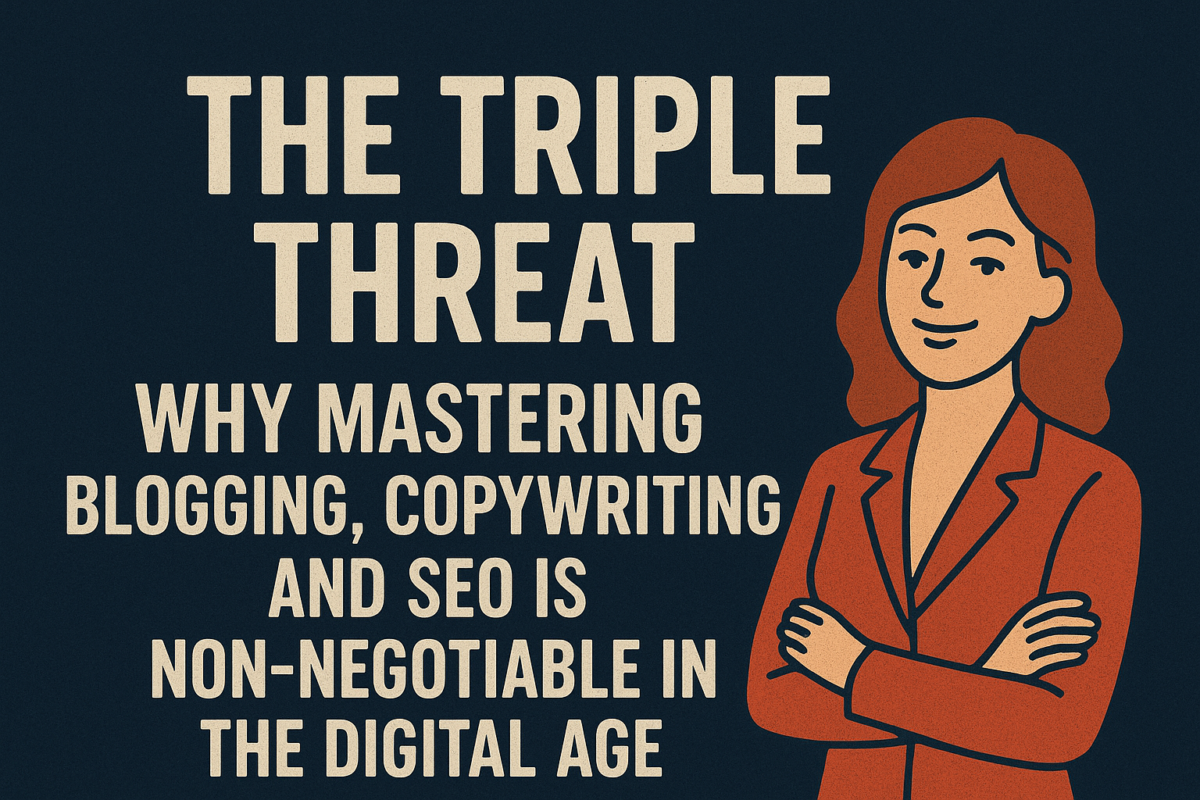In the fast-paced world of digital marketing, content is king, but not all content is created equal. Many people use the terms blogging, copywriting, and SEO interchangeably, or mistakenly believe that mastering one is enough. The truth is, these are three distinct, yet deeply interconnected, disciplines. To truly succeed online, you must understand the unique purpose of each and commit to mastering the triple threat.This post will break down the core differences between these three essential skills and explain why their synergy is the key to unlocking maximum online visibility and conversion.
1. Blogging: The Art of Connection and AuthorityBlogging is the foundation of a brand’s long-term content strategy. It is primarily an informational and educational medium designed to build a relationship with the audience and establish thought leadership. The primary goal of blogging is to build Authority and Trust. The purpose of a blog is to inform, educate, entertain, and build a community. This is achieved through long-form content—such as blog posts, articles, guides, tutorials, and thought pieces—that answers user questions and explores topics thoroughly. The tone is typically conversational, informal, and personal, focusing on depth and value. Success in blogging is measured by metrics like Time on Page, Social Shares, and Return Visitors. A great blogger is a storyteller and a teacher, focused on providing value and fostering a loyal readership.
2. Copywriting: The Science of Persuasion
Copywriting is the direct opposite of blogging’s long-term, relationship-building goal. It is the craft of writing text with the express purpose of persuading a reader to take a specific, immediate action. The primary goal of copywriting is Conversion and Sales. The purpose of this skill is to motivate and drive immediate action, whether that is a purchase, a sign-up, or a download.
Copywriting focuses on short-form, high-impact text—such as sales pages, advertisements, email subject lines, landing page headlines, and Calls-to-Action (CTAs)—that highlights benefits and uses powerful, emotionally resonant language. The tone is urgent, direct, and benefit-focused. Success is measured by metrics like Click-Through Rate (CTR), Conversion Rate, and ultimately, Revenue. A master copywriter is a digital salesperson.
3. SEO: The Strategy of Visibility
Search Engine Optimization (SEO) is not a writing skill, but a technical and strategic discipline that ensures your content is seen by the right people at the right time. It is the bridge that connects your content to your audience via search engines like Google. The primary goal of SEO is Visibility and Traffic. The purpose of SEO is to optimize content and website structure for search engine ranking. This involves strategic work like keyword research, link building, technical site health, and optimizing content structure, meta descriptions, and alt tags. The discipline itself is neutral, technical, and data-driven, focusing on algorithms and keywords. Success is measured by metrics like Search Ranking Position, Organic Traffic, and Impressions. An SEO expert is a digital cartographer, mapping out the path for search engines to discover, understand, and rank your content above the competition.
The Power of Synergy: Why You Must Master All Three
In the early days of the internet, you could get by with just one of these skills. Today, the digital landscape is too competitive for a single-skill approach. The most successful content creators and marketers understand that these three disciplines are not silos, but interlocking gears in a single, powerful machine.
Consider the common pitfalls of a single-skill approach. If you have Great Copy, No SEO, you might create an incredibly persuasive sales page, but if it doesn’t rank for any relevant keywords, no one will find it. This is a failure of Visibility. The solution is to write persuasive copy and optimize it with high-value keywords and a strong meta description, driving qualified traffic directly to your conversion page. Conversely, if you have Great SEO, No Copy, your blog post might rank #1 on Google, but if the content is dry, unengaging, and fails to convince the reader of your authority or product value, the traffic is wasted. This is a failure of Persuasion. The solution is to use SEO to achieve top ranking, and then use engaging, well-written blogging to build trust, and persuasive copywriting to convert the reader at the end of the post.
Finally, if you have Great Blogging, No SEO, you may write brilliant, insightful articles that your small, existing audience loves, but you fail to attract new readers because your content is not structured for search engines. This is a failure of Reach. The solution is to use blogging to create valuable content, and SEO to ensure that content is discovered by a massive, new audience searching for those exact topics.
The modern digital professional is a Full-Stack Content Creator—a hybrid who can Blog to build a loyal audience and establish long-term authority, Copywrite to convert that audience into customers and drive revenue, and use SEO to ensure both the blog and the copy are visible to the widest possible qualified audience. Mastering this triple threat is not just an advantage; it is the new baseline for success. It allows you to create content that is not only found, but also loved, and most importantly, converts. Start learning the missing piece of your content puzzle today, and watch your digital presence transform.
